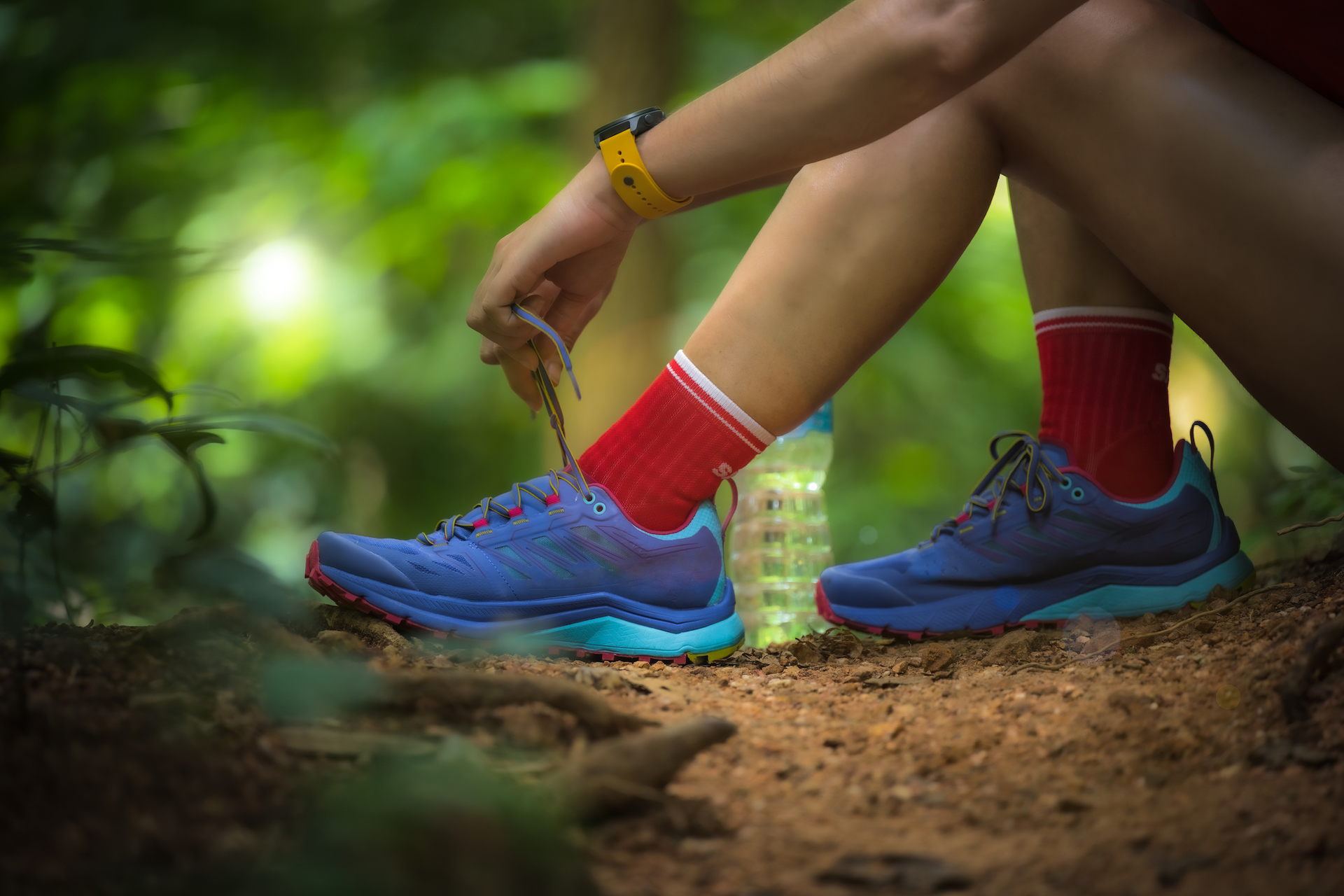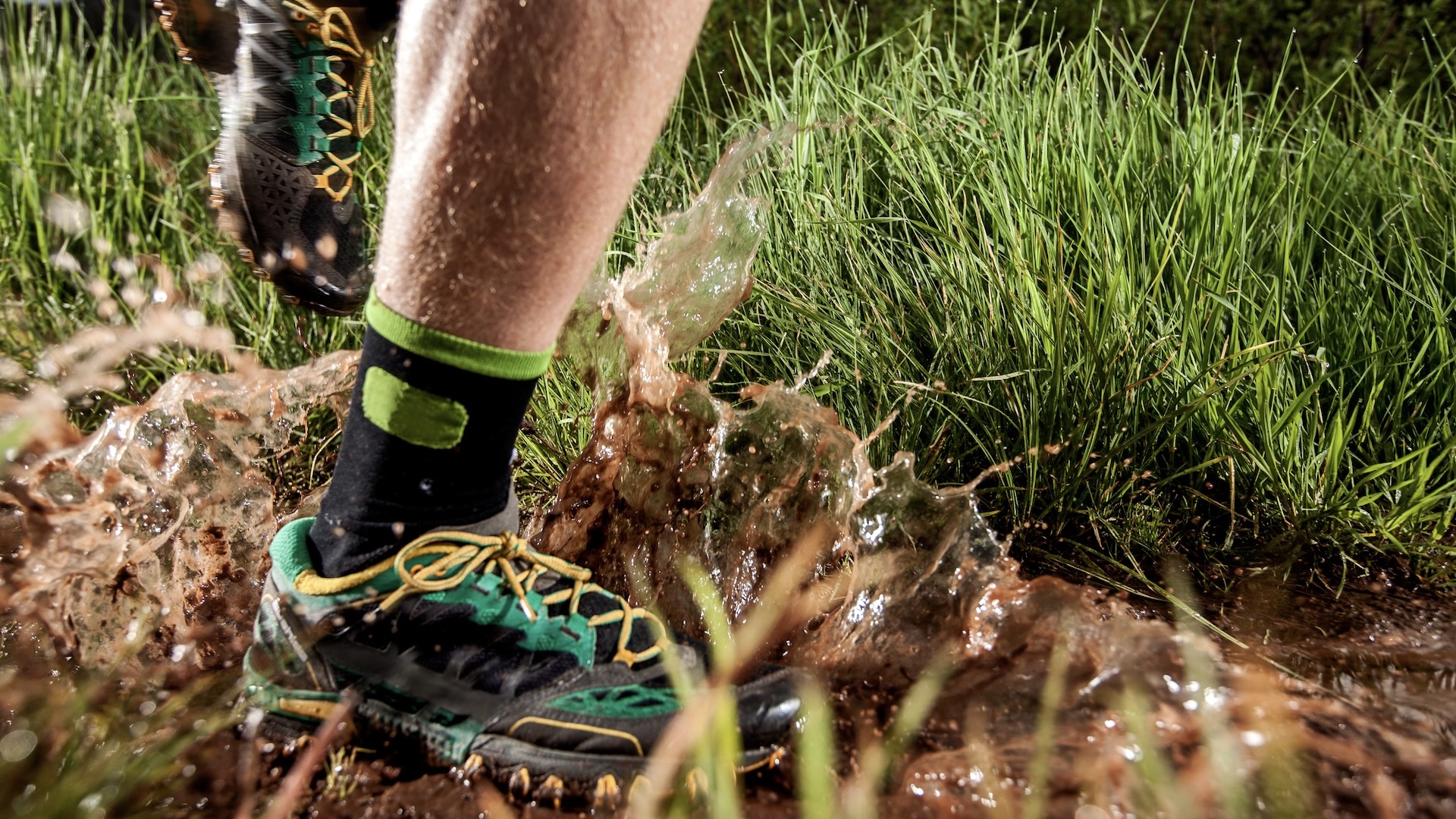Want to start running? How to avoid hurting yourself
Expert tips on footwear and foot care to stay injury-free when you are getting into running, or training for a race

Whether you are new to running or hoping to compete in a race or a running challenge, you’ll want to avoid the pitfalls of ending up injured. For many people, the first months of a year are when they are most motivated to start a new keep-fit hobby. Many runners also look ahead to a race or event goal later in the year.
There are plenty of tips of how to get into running, especially in this beginner's guide, and these include pacing yourself, building up sensibly and choosing races that are achievable given your current fitness levels.
But of greatest important, suggests biomechanics expert Christophe Champs, is making sure you choose the right running footwear and that you take care of your feet before, during and after running.
“While the human body has an incredible capacity for adapting and transforming to suit new situations, your behaviour and environment can affect this," says Champs.
“For example, if you are preparing for a race, the right training as well as the right footwear and foot care, are essential to get you ready, both physically and mentally.”
Champs explains that there are three vital parts of the injury prevention jigsaw puzzle when preparing for a run: running shoes, laces, and looking after the health of your feet.

How to choose the right running shoes
The most important item of kit for runners is choosing the right running footwear. But do you know why? Champs, the founder of London’s PODO Clinic and Workshop, explains: “There is a lot to look for in running shoes, including cushioning, heel-to-toe drop and pronation control. Also, when investing in running shoes, you should watch out for marketing fairy tales."
All the latest inspiration, tips and guides to help you plan your next Advnture!
The first consideration will be where you will be running. You should choose trail running shoes or road running shoes to suit.
Christophe explains that cushioning in running shoes is extremely important. “When you walk, you transfer your weight from one foot to both feet, to the other foot, back to both feet and so on. This means that around 80% of your body weight is reasonably well distributed between your feet. Running is a different story: one foot, no feet, the other foot, you take off again.
"So, running comes with two opposing challenges: the landing and its need to be cushioned versus the propulsion, which needs elasticity within the shoe sole.
"While the human body already naturally has cushioning underfoot – the plantar fat pad – located between the heel skin and heel bone, it is often advised that we need some extra cushioning. As good as the fat pad is, it can do with some extra help and protection."
However it can be difficult to know what to choose. "Every brand has its claims, such as Nike and its encapsulated air, Asics and its gel, Mizuno and its Wave," says Champs. "They are all trying to mimic the fat pad on your heel.
“Other brands will simply drill holes in the soles, lightening the soles, and use cloud shapes to tell you that it’s like running on cloud. I recommend runners watch out for these marketing fairy tales.
“A good support is essential in running footwear. I advise that runners look for a strong heel counter in running shoes and/or a snug heel cup from orthotics/insoles that will help to cradle the heel and prevent the precious fat pad from spreading out.
"Also, you need to look at propulsion. This is where the cushion under the front fat pad of your foot needs elasticity, which gives you better lift and propulsion as your foot pushes off and leaves the ground."
Laces are underrated
Laces are designed to ensure a fusion between your foot and the running footwear. Champs believes this is an area of running and footwear that many people overlook.
”The design of your running shoe – its upper part – has been built to strap your foot to the sole of your shoes when your laces are tied," he says. "If this is damaged in any way, then it cannot do its job properly so I suggest you keep an eye on the laces or eyelets to ensure they are not broken.
“The length of the laces matters, too, especially if you have a large shoe size or a wider foot. You want to make sure you have enough lace length to properly tie the laces.”
He also advise runners stick with traditional non-elastic laces. “Pull and go” elastic laces have been around for years and are especially favoured by triathletes, who require quick transition from cycling to running, but the elastic can stretch too much rather than offer good support.
Champs says: “My recommendation is to train with non-elasticated laces and use the elastic ones on race day if you want to.”

Heel-to-toe drop
The drop is the difference in height between the heel and the forefoot. There are two schools of thought on choosing a running shoe with less or more heel-to-toe drop.
First, there has long been movement for barefoot running shoes. Champs explains: “There has been a strong movement to go back to our roots because of fears of developing injuries from wearing technical footwear. These shoes are often termed ‘barefoot’ running shoes.
“In this category, you’ll also see reduced-drop shoes, which can serve as an introduction to barefoot running.”
Second, there is the argument that we need shoes that are more technical and supportive. Champs says: ”Looking at barefoot shoes with a clinical eye, a reduced drop lowers the heel and brings the foot closer to a barefoot position. However, in my opinion, it misses the point that your calves, Achilles, and plantar fascia all work together. If you pull one and it affects the other.
“Therefore, by reducing the drop, you can create an excess of traction in those structures. Plus, less material means less support. A lighter sole is sometimes flimsy and this can lead the forefoot to spread and the toe box to feel narrow.”
The advice is that if you are keen to try barefoot running, you should transition over weeks and months. Also, if you want to try a reduced toe-to-heel drop shoe, you need to carefully transition from a larger drop.
Champs says: “Your muscles and tendons need time and training to adapt. Ideally, you should get some professional guidance to help you avoid injury when transitioning.”
Pronation control
Runners have different gaits and many runners naturally over or under pronate. Champs explains: “At a knee, ankle, foot and big toe level, this natural movement helps your body to absorb shock.
“So, pronation control can be helpful to avoid repetitive injuries of too much over or under pronation.”
Pronation controls often comes in the form of a firmer foam, or a hard piece added on the medial side of your shoe sole.
Again, It is a good idea to seek expert guidance on your personal pronation when buying new running footwear.

Socks and moisture
Champs believes that many runners overlook the need to keep feet in good condition. Feet take a pounding from running and will often end up wet and sweaty. Without good care, you can end up with rubs, sores, blisters and issues such as Athlete’s foot or even trench foot.
The top tip is to buy socks that are designed for runners. “Choose running socks that fit you and look for socks that have an elastic support in the instep, arch and ankle," he says. £The elastic support helps to position the socks on the feet and reduce rubbing, which in turn helps to prevent blisters.”
Other advice for runners includes applying cream on the dry and cushioned areas of the foot, such as around the heel and the ball of the foot. Massage the areas where both corns and calluses tend to build up to improve your skin elasticity, and use a specific foot cream to nourish and moisturise.
“Did you know the skin under your foot is seven times thicker than your face skin, and four times thicker than your body skin?" says Champs. "This means it needs a specialist cream.”
He warns against applying cream between the toes, and instead recommends talcum powder. “Talcum powder is not designed to dry the skin but to control the perspiration and it leaves a thin protective veil.”
Pay attention to toenails, too. Keep them short and square and smooth the lateral corners with a glass file to prevent any small tears or cuts from nails cutting into the skin of the next toe.
Many longer-distance runners, as well as hill runners, end up with recurrent black toenails. Champs recommends that runners aim to avoid this issue by learning how to correctly tie running shoe laces, such as the heel lock method.
And after every run, make sure you get out of wet or sweaty footwear as soon as you can. Wash feet to remove dirt and sweat and fully dry them. It is a good idea to gently massage feet to see if there are areas that might require attention, such as blisters or hard skin.
Early prevention for foot issues is far better than having to treat major problems after they arise.
Conclusion
There are many factors that will avoid niggles and injuries when you start running but the three key elements, according to our expert, are the correct running footwear, paying attention to shoe laces and a good foot care routine.
- Best trail running socks: tested and rated for comfort and support

Fiona Russell is a widely published adventure journalist and blogger, better known as Fiona Outdoors. She is based in Scotland and is an all-round outdoors enthusiast with favorite activities including trail running, mountain walking, mountain biking, road cycling, triathlon and skiing (both downhill and backcountry). Aside from her own adventures, Fiona's biggest aim is to inspire others to enjoy getting outside and exploring, especially through her writing. She is also rarely seen without a running skort! Find out more at Fiona Outdoors.
